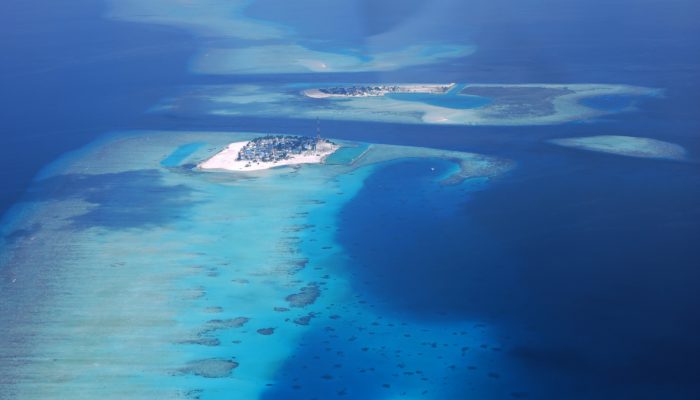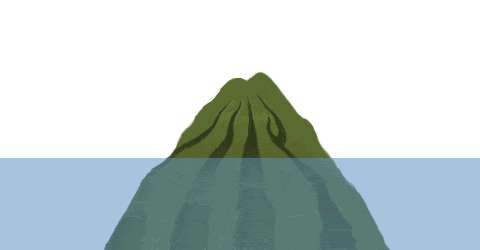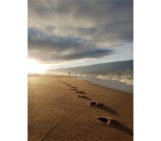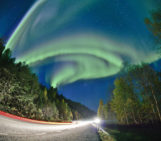
Covering a total area of 298 km², the idylic natural atolls and reefs of the Maldives stretch across the Indian Ocean. The tropical nation is famous for it’s crystal clear waters and picture perfect white sand beaches, but how did the 26 ring-shaped atolls and over 1000 coral islands form?
Coral reefs commonly form immediately around an island, creating a fringe which projects seawards from the shore. If the island is of volcaninc origin and slowly subsides below sea level, while the coral continues to grow growing outwards and upwards, an atoll is formed. They are usually roughly circular in shape and have a central lagoon. If the coral reef grows high enough, it will emerge from the sea waters and start to form a tiny island.
“I took this photo while flying over the Maldives, south of Malè, from a small seaplane,” describes Favaro, who took this stunning aerial image of an atoll above the Indian Ocean.
Pictured, goes on to explain Favaro,
“[is] part of the ring-shaped coral reef bounding the atoll. On the right side of the image there is the lagoon and on the left side the open ocean. The coral reef is interrupted twice by ‘Kandu’ (water passages in Dhivehi [the language spoken in the Maldives]), which are the places where water flows in and out of the atoll when the tides changes”.
Two small harbours and antennas suggest the two small islands are occupied by local people, not by a resort or hotels.
“What always strikes me is how they can live so isolated, in a place which doesn’t offer basic resources, such as drinkable water,” says Favaro.
Fresh water is scarce in this archipelago nation. Rainwater harvesting is unreliable; poor rainfall means depleted collection tanks and groundwater tables. The problem is being exacerbated by climate change which is altering the monsoon cycle and rainfall patters over the Indian Ocean. As a result, the country relies heavily on desalination plants (and imported bottled water) to sustain the nation and the 1 million tourists who visit annually.

This animation shows the dynamic process of how a coral atoll forms. Corals (represented in tan and purple) begin to settle and grow around an oceanic island forming a fringing reef. It can take as long as 10,000 years for a fringing reef to form. Over the next 100,000 years, if conditions are favorable, the reef will continue to expand. As the reef expands, the interior island usually begins to subside and the fringing reef turns into a barrier reef. When the island completely subsides beneath the water leaving a ring of growing coral with an open lagoon in its center, it is called an atoll. The process of atoll formation may take as long as 30,000,000 years to occur. Caption and figure credit: National Oceanographic and Atmospheric Administration (NOAA).
References and further reading
How Do Coral Reefs Form? An educational resource by NOAA
Amazing atolls of the Maldives – a feature on NASA’s Earth Observatory.
Imaggeo is the EGU’s online open access geosciences image repository. All geoscientists (and others) can submit their photographs and videos to this repository and, since it is open access, these images can be used for free by scientists for their presentations or publications, by educators and the general public, and some images can even be used freely for commercial purposes. Photographers also retain full rights of use, as Imaggeo images are licensed and distributed by the EGU under a Creative Commons licence. Submit your photos at http://imaggeo.egu.eu/upload/.




